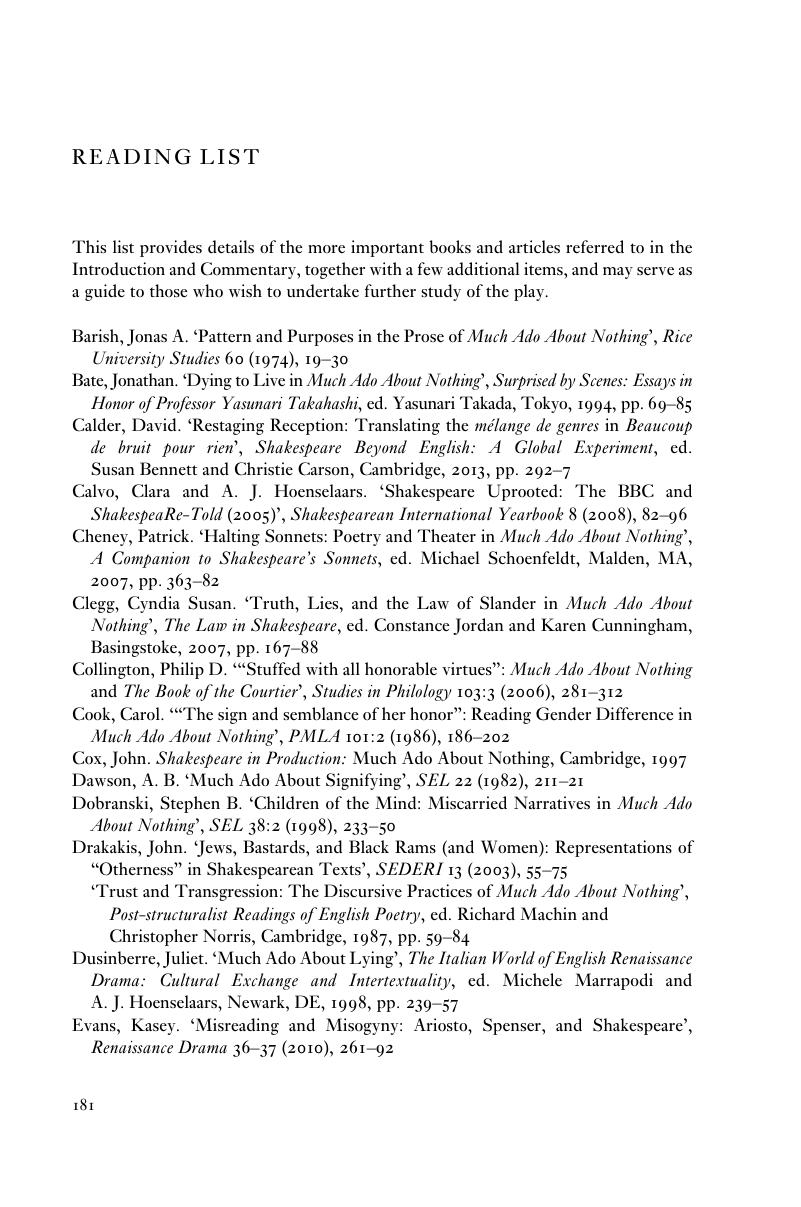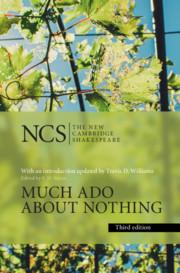Book contents
- The New Cambridge Shakespeare
- The New Cambridge Shakespeare
- Much Ado About Nothing
- Copyright page
- The New Cambridge Shakespeare
- Contents
- Illustrations
- Preface To The First Edition
- Abbreviations and conventions
- Introduction
- Much Ado About Nothing
- Supplementary notes
- Textual analysis
- Book part
- Reading List
- References
Reading List
Published online by Cambridge University Press: 16 August 2019
- The New Cambridge Shakespeare
- The New Cambridge Shakespeare
- Much Ado About Nothing
- Copyright page
- The New Cambridge Shakespeare
- Contents
- Illustrations
- Preface To The First Edition
- Abbreviations and conventions
- Introduction
- Much Ado About Nothing
- Supplementary notes
- Textual analysis
- Book part
- Reading List
- References
Summary

- Type
- Chapter
- Information
- Much Ado about Nothing , pp. 181 - 184Publisher: Cambridge University PressPrint publication year: 2018

